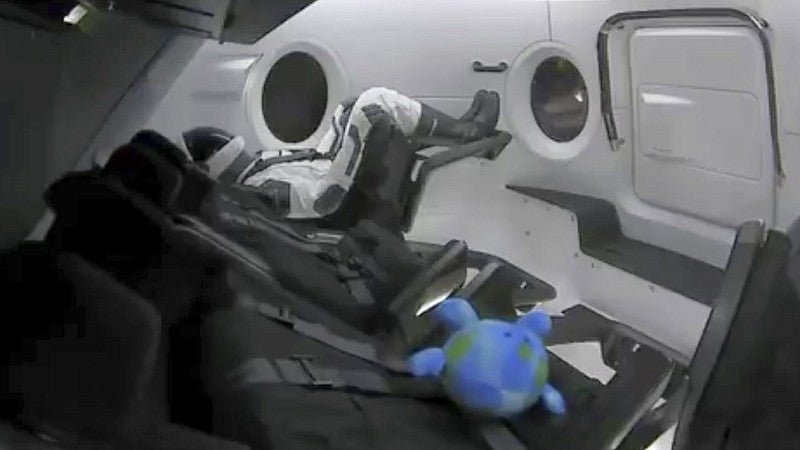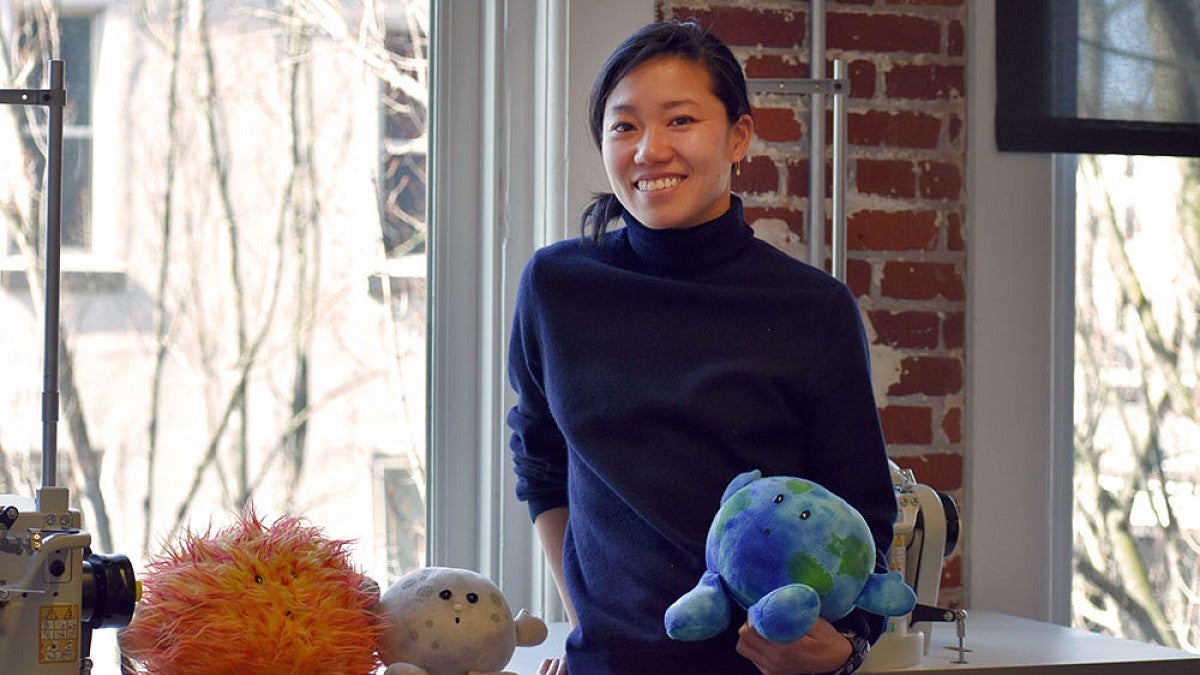Jessie Silbert was working on her sports product design final project last week when her dad started sending her updates about an uptick in orders from her business Celestial Buddies. A little stuffed planet Earth had sold out overnight.
SpaceX founder Elon Musk tweeted Friday about adding a last-minute “super high tech zero-g indicator” to the mission and introduced the universe to Earth, a friendly little plush globe created by Silbert. Now the little Earth has a bit of a social media following as a sort of mascot on the International Space Station.
“It’s been crazy,” said Silbert, a first-year graduate student in the sports product design program at University of Oregon Portland. “It was weird to see photos where the whole cabin is black and white and then a little blue blob.”
The idea for Earth and all his planetary friends was in many ways launched when Silbert was young. By the time she was about 8 she was making her own stuffed animals, doll clothes and Halloween costumes.
“People told me I should be a fashion designer. I didn’t really know what that meant at the time, but I decided that’s what I wanted to do,” she said. “But I knew I didn’t want to just go to fashion school. I wanted the full liberal arts experience. I had other interests besides art and fashion, including science and history.”
While in college in her home state of Connecticut, Silbert fell for an astronomy class.
“I wasn’t interested in the math,” she said. “I just really wanted to see beautiful things, like Saturn and its rings and the galaxy.”
She headed to New York City after graduation and worked for designers Zac Posen, Peter Som, Yigal Azrouel and Coach. While watching a documentary, her mind wandered back to her astronomy class and how to make something like the planets and space accessible to young kids. She took to her sketchbook and Earth, Sun, Moon and Comet were born.
From homemade prototypes and material research to creating custom screen print fabric and working with a factory overseas, the original Celestial Buddies were put into production. A buyer for several museums around the country put in an order after seeing the items at a tiny booth at a toy fair.

As she expanded her products to capture more celestial bodies — including a rusty red Mars with a tuft of white, polar-ice-cap hair, and Pluto and Charon, who revolve around each other as a double planet — she became a senior designer of outerwear, pants and suits at Ann Taylor.
“I started to feel a disconnect from the products I was designing and my personal interests,” Silbert said. “I had become a marathon runner and was getting into triathlons. I wanted to design for a performance company that works on functional products to help people, specifically women live full, healthy, active lives.”
A headhunter told her she didn’t have the background or experience to work at an athletic or sportswear company and kept pushing her to fashion jobs. It was an ah-ha moment for Silbert when a former mentor announced she was heading to graduate school to study her passion of sustainable fashion.
“I was really inspired. She’s not a traditional student but is doing what she wants to do. I thought about business or marketing, but then saw the UO’s sports product design program,” she said. “But I lived in New York. I would have to pick up my whole life to move to the West Coast.”
The Pacific Northwest is the hub of the sports and outdoor industry, with many companies located in Portland. The UO’s sports product design graduate program in the College of Design prepares students to be key members and leaders of multidisciplinary development teams. Students in the program work closely with industry mentors and experienced faculty members to study sports product techniques, tools and platforms, and human physiology, biomechanics and sports psychology.
She quickly realized she needed to move west, both for the access to the companies she eventually wanted to work for and also as an athlete. She said it’s hard to train in cycling in New York, where the riding options were limited.
Now Silbert is focused on learning functional design. When she heard that her Earth was leaving the planet on the SpaceX flight, she was working on her final project, a running outfit for Muslim women.
“My interest has been in serving women, helping women who aren’t professional athletes but want to live healthy, active lifestyles,” she said. “Designing for the exclamation points in a woman’s life, like having a baby or creating a bra for an aging demographic.”
“Jessie’s success is the result of identifying an awesome and untapped design opportunity,” said Susan Sokolowski, associate director of product design and director of the sports product design graduate program. “The sports product design program is proud to be part of her design adventures in the universe.”
—By Heidi Hiaasen, University Communications


